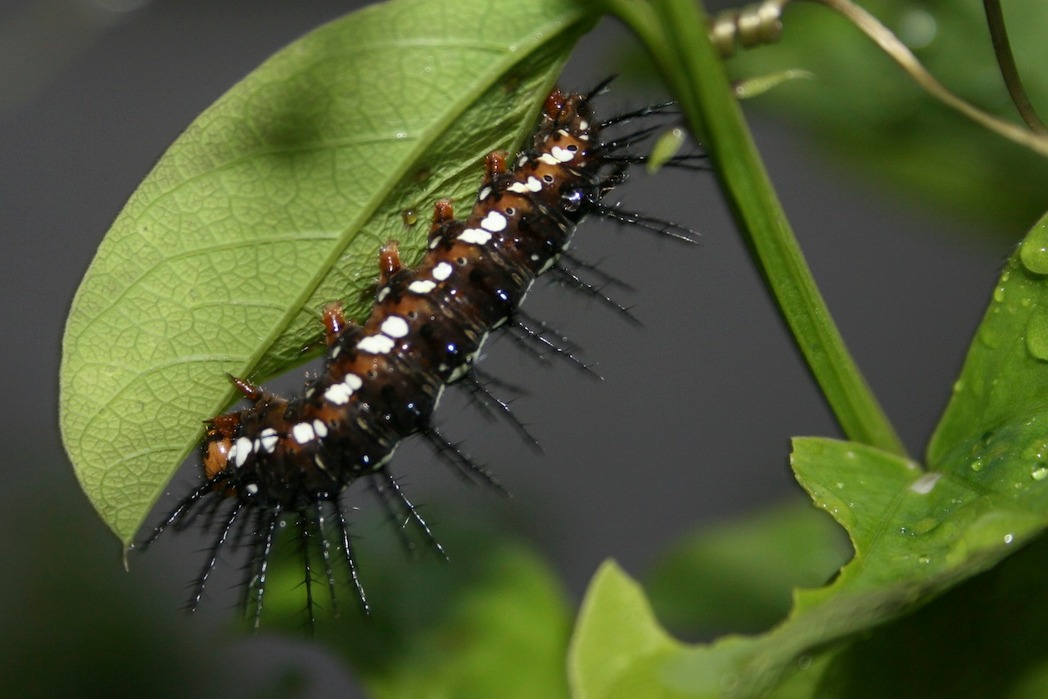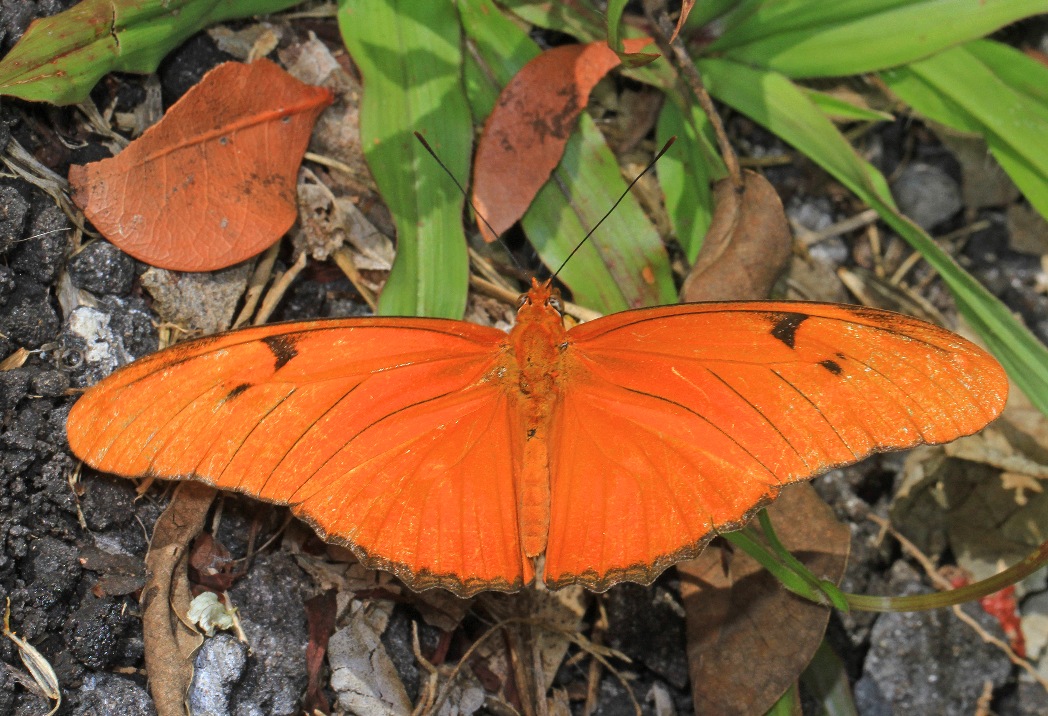Julia
“Know your native pollinators” is a series of articles that will help you identify and appreciate Florida’s varied pollinators, including bees, wasps, butterflies, moths, beetles, flies, birds and bats. Pictured above: Julia (Dryas julia), Everglades National Park, by Judy Gallagher (CC BY 2.0).
The genus name Dryas originates from Greek Dryad nymphs that live in oak forests. What an appropriate name for this forest-dwelling butterfly!
CLASSIFICATION
Class: Insecta
Order: Lepidoptera
Family: Nymphalidae
Subfamily: Heliconinae
Tribe: Heliconini
Genus species: Dryas iulia
IDENTIFICATION
Also known as Julia heliconian and Flambeau (the flame), the Julia butterfly is one of three in the Heliconinae subfamily and is a member of the Heliconini tribe. These Heliconini are also known as longwings and include Florida’s state butterfly, the Zebra longwing. They belong to the Nymphalidae or brush-footed family of butterflies. The Julia’s legs are covered in short bristles that look like they could belong on a hairbrush.
Julias are recognizable by their elongated orange wings, which can stretch to a 9.2 cm wingspan. Females are generally a duller orange than their male counterparts and have a black bar across the forewing, close to the tip of the wing. Males have this black marking, but it is more spotted than bar-like. Both sexes have a narrow black border on the hindwing. The Julia’s front legs are so short they usually cannot be seen, giving the appearance of having only 4 legs.
DID YOU KNOW?
Julias practice Batesian mimicry, mimicry of a harmless species imitating a harmful one, and have evolved to resemble orange butterflies like the Monarch that are actually toxic to predators.
FORAGING PREFERENCES
Julias nectar from native Pineland lantana (Lantana depressa), Buttonsage (Lantana involucrata), Dogfennel (Eupatorium capillifolium), and Beggarticks (Bidens alba). Performing a process that involves visiting food sources in a repeated, sequential manner called “traplining,” these butterflies forage for nectar along a set route that they regularly follow.
Similar to their Zebra longwing relative, the Julia relies on Passiflora species as their host plant, especially Corkystem passionflower (Passiflora suberosa) and Whiteflower passionflower (Passiflora multiflora).
HABITAT
Julias are common throughout the southeastern United States and are found in flight year-round in southern Florida. Stretching farther south, they can be found in tropical regions of Central American, the Caribbean and South America.
If you are observant, you can probably find Julias flitting through oak and hardwood hammocks, meadows and other clearings, riverbanks and hopefully even your own wildflower garden!
LIFE CYCLE
The female lays a yellow egg singly on the host plant. The eggs become a mottled brown over time. Larvae are brown with white spots and black branched spines all over their bodies.

References:
- Florida Museum. “Julia.” June. 2020. University of Florida.
- Hoskins, Adrian. “Julia, or Flambeau” Butterflies of Amazonia. Just Host. Accessed Sept. 9, 2021.
- Lotts, Kelly and Thomas Naberhaus, coordinators. “Julia Heliconian Dryas iulia.” 2021. Butterflies and Moths of North America. (Version 09152021).
- Wild South Florida. “Julia heliconian” Naturally Florida. Accessed Sept. 9, 2021.

